27 Iconic European Chocolate Cakes That Make Life Sweeter
European chocolate cakes represent a delectable journey through culinary artistry and sweet passion.
Bakers across the continent have perfected these decadent desserts with remarkable skill and creativity.
Rich, velvety textures and complex flavor profiles define these remarkable confections.
Generations of pastry chefs have transformed simple ingredients into extraordinary gastronomic experiences.
Each cake tells a story of cultural heritage and refined techniques passed down through families.
Regional variations showcase unique approaches to combining chocolate with traditional baking methods.
These indulgent treats blend luxurious ingredients, precise craftsmanship, and centuries of baking wisdom.
You'll find pure magic in every carefully constructed slice: 27 Legendary European Chocolate Cakes:
Legendary European Chocolate Cakes to Satisfy Any Sweet Tooth
European bakers have perfected chocolate cakes, think layers, ganache, and rich, bold flavor. Slices are meant for savoring and sharing with those you love.
Kladdkaka
Kladdkaka is Sweden's irresistible chocolate cake beloved for its gooey center and crispy exterior that remains slightly wet inside while developing a delicate crackly shell during baking.
Swedish bakers craft this dessert with simple ingredients like eggs, butter, sugar, cocoa, and flour to create an intensely rich chocolate experience.
Minimal flour ensures an ultra-dense texture that distinguishes kladdkaka from standard chocolate cakes.
Powdered sugar typically adorns the top for elegant presentation.
Fika, Sweden's cherished coffee break tradition, often features this decadent treat alongside coffee or tea.
Home kitchens and bakeries across Sweden celebrate kladdkaka as a classic comfort dessert.
Its popularity stems from easy preparation and intense chocolate flavor.
Serving alongside vanilla ice cream or whipped cream enhances its indulgent character.
Torta Caprese
Torta Caprese embodies Italian chocolate decadence without a trace of flour, creating a rich and dense dessert native to Capri's culinary traditions.
Dark chocolate, almonds, eggs, sugar, and butter form its signature ingredients, producing an intensely chocolatey cake with a unique texture.
Legend suggests this dessert emerged from a happy kitchen accident when a baker accidentally omitted flour from a standard recipe.
Italian restaurants frequently serve it with a light dusting of powdered sugar and a scoop of creamy vanilla ice cream.
Halved strawberries or raspberries often garnish its surface, adding a fresh, colorful contrast.
Restaurant chefs and home bakers alike prize this flourless cake for its intense chocolate flavor and smooth, dense consistency.
Mediterranean baking techniques shine through its simple yet elegant preparation.
Weight-conscious dessert lovers appreciate its naturally gluten-free composition.
Torta Tenerina
Torta tenerina represents a luxurious Italian chocolate cake crafted in Ferrara to celebrate Queen Elena Petrovich during the early 1900s.
This flourless dessert boasts an exquisite meringue-like exterior that cradles an incredibly light, rich chocolate interior.
Prepared with just five simple ingredients - chocolate, butter, eggs, sugar, and cornstarch - the cake embodies culinary simplicity and elegance.
Regional bakers carefully balance each component to create a tender texture that melts in you mouth.
Italian pastry shops across Ferrara proudly feature this signature dessert.
Bakeries throughout Italy have embraced the recipe, making it a beloved national treat.
Its name translates to "tender cake," perfectly describing its delicate nature.
Restaurant menus and home kitchens continue to celebrate this classic chocolate sensation.
Torta Savoia
Torta Savoia is a luxurious Sicilian chocolate cake celebrating historical unity through decadent layers of flavor.
Legendary Benedictine nuns crafted this dessert to commemorate Sicily's integration with Italy in 1861, using hazelnuts from Piedmont as a symbolic ingredient.
Multiple delicate sponge layers form its foundation, generously coated with rich chocolate hazelnut cream.
Rum occasionally enhances the cake's moisture and depth.
Glossy chocolate glaze envelops the entire dessert, creating an elegant exterior.
Hazelnut elements reference the royal House of Savoy, explaining its sophisticated name.
Each slice represents a harmonious blend of regional ingredients and cultural significance.
Pastry lovers appreciate its complex texture and meaningful historical background.
Sacher-Torte
Sacher-Torte represents Austria's most celebrated chocolate cake, meticulously crafted by 16-year-old Franz Sacher in 1832 for Prince Clemens Metternich.
Layers of rich chocolate sponge define this legendary dessert, carefully coated with smooth apricot jam and finished with glossy chocolate icing.
Elegant and sophisticated, the cake demands precision in every preparation step.
Traditional serving includes a delicate cloud of unsweetened whipped cream alongside the slice.
Royal origins trace back to the Austrian court, where young Sacher impressed his culinary supervisors with innovative baking skills.
Modern versions maintain the original recipe's strict standards, particularly at Vienna's Hotel Sacher.
Chocolate lovers worldwide recognize this dessert as an authentic Austrian gastronomic symbol.
Torta Garash
Garash cake embodies Bulgarian pastry excellence with its five delicate walnut sponge layers richly coated in dark chocolate ganache.
Created in 1885 by Austro-Hungarian confectioner Kosta Garash while working at a luxurious hotel in Ruse, Bulgaria, this dessert quickly became a national favorite.
Elegant chocolate icing envelops the cake's intricate layers, highlighting its sophisticated flavor profile.
Walnuts provide a nutty texture complementing the smooth chocolate coating.
Decorative elements like desiccated coconut, sliced almonds, or chocolate ornaments enhance its visual appeal.
Restaurant and patisserie menus across Bulgaria now feature this beloved dessert.
Garash's innovative recipe transformed a simple hotel offering into a celebrated national treat.
Professional bakers continue to honor its traditional preparation method, ensuring its culinary legacy.
Torta Setteveli
Torta setteveli seduces dessert lovers with its dramatic seven-layered chocolate and hazelnut symphony, originating from Sicily's rich pastry tradition.
Named after Salome's provocative dance, this intricate cake layers chocolate sponge, praline crunch, hazelnut Bavarian cream, chocolate mousse, and a glossy chocolate glaze.
Competing stories credit either Capello from Palermo or Luca Mannori from Prato as its creator, with Mannori winning the 1997 Pastry World Cup in France.
Each layer offers a complex texture and intense flavor profile that transforms a simple cake into a sensational dessert experience.
Regional bakers carefully construct this complex treat by alternating chocolate and hazelnut elements with precision and skill.
Sicilian celebrations often feature this elegant cake as a centerpiece dessert.
Its elaborate preparation requires significant pastry expertise and high-quality ingredients.
European chocolate and hazelnut traditions merge beautifully in this stunning cake design.
Schwarzwalder Kirschtorte
Black Forest cherry cake embodies Germany's most iconic chocolate-cherry dessert featuring layers of rich chocolate sponge cake soaked in kirschwasser brandy and generously layered with whipped cream and fresh cherries.
German bakers traditionally prepare this decadent treat by alternating chocolate cake layers with sweet cherry filling and smooth cream.
Kirschwasser brandy adds a distinctive alcoholic depth to the cake's flavor profile.
Josef Keller and Erwin Hildenbrand both claim credit for inventing the original recipe in the early 20th century.
Regional bakeries across Germany's Black Forest region continue crafting this classic dessert with meticulous attention to ingredient quality.
Chocolate shavings and whole cherries crown the cake, creating a visually stunning presentation.
Each slice offers a perfect balance of chocolate, cream, and fruit flavors.
Authentic versions use specific chocolate sponge techniques and kirsch-infused cherries to maintain traditional preparation methods.
Reform Torta
Reform torta is a luxurious Serbian celebration cake featuring multiple layers of walnut sponge cake and silky chocolate cream.
Originating after World War II, this dessert symbolizes Serbian culinary traditions with its elegant composition.
Bakers craft the cake by carefully whipping egg whites with sugar and folding in ground walnuts to create a light sponge base.
Chocolate filling made from egg yolks, sugar, and butter provides rich, smooth layers between each cake section.
Skilled bakers frost the entire cake with the remaining chocolate cream, creating a uniform, glossy surface.
Chopped walnuts typically garnish the top, adding texture and visual appeal.
Families serve this cake during special occasions like weddings, birthdays, and holiday gatherings.
Serbian households consider reform torta a treasured dessert that connects generations through its sophisticated taste and preparation.
Torta Barozzi
Torta Barozzi are sophisticated Italian almond and cocoa cakes originating from Vignola, Italy, with an intense rum and coffee flavor profile that distinguishes them from traditional desserts.
Eugenio Gollini created this unique cake in 1907 as a tribute to Jacopo Barozzi, a renowned 16th-century architect.
Generations of Gollini family members have closely guarded the original recipe, maintaining its mysterious culinary heritage.
Rich cocoa and ground almonds form the cake's complex base, delivering deep, sophisticated flavors.
Rum and coffee undertones create a sophisticated taste experience that lingers after each bite.
Italians typically enjoy torta Barozzi during morning coffee breaks or as an elegant dessert paired with custard or vanilla ice cream.
Bakers carefully balance ingredients to achieve its signature dense, moist texture.
Each slice promises a luxurious journey through traditional Italian baking techniques and flavors.
Maarica
Maarica represents a luxurious Hungarian layered cake celebrating feminine elegance through intricate dessert design.
Hungarian families traditionally prepare this special cake for significant celebrations like weddings and birthdays.
Chocolate cream generously coats multiple delicate cake layers, creating a rich and complex texture.
Dark chocolate glaze perfectly complements the cake's smooth surface, adding depth and intensity to each slice.
Women's names inspired the cake's original concept, symbolizing beauty and grace through culinary artistry.
Sweet chocolate layers connect generations of Hungarian baking traditions.
Hungarian bakeries often feature this elaborate dessert during festive seasons.
Sweet memories and cultural pride emerge with every carefully crafted slice.
Amandine
Amandine is a decadent Romanian chocolate cake layered with luxurious cream and glossy chocolate glaze.
French culinary traditions inspired this rich dessert originating in Eastern Europe.
Romanian bakers craft the cake using a delicate sponge base soaked in rum-infused syrup.
Chocolate buttercream fills multiple thin cake layers, creating intense flavor complexity.
Eggs, sugar, flour, butter, and cocoa form the primary ingredients blending seamlessly.
Whipped cream and chocolate combine to create a smooth, shiny exterior glaze.
Each slice reveals intricate layers of texture and sweetness.
Generations have savored this elegant chocolate cake as a beloved celebration dessert.
Dios Torta
Dios torta represents a luxurious Hungarian chocolate sponge cake featuring multiple layers of rich walnut and chocolate buttercream.
Ground walnuts provide a distinctive nutty base for the delicate cake's structure.
Hungarian bakers create this dessert by carefully blending eggs, sugar, ground walnuts, flour, and lemon zest into a tender sponge.
Chocolate buttercream transforms the simple cake into an elegant multilayered treat.
Precise mixing techniques ensure a light, airy texture throughout each slice.
Traditional recipe methods pass through generations of Hungarian families.
Complex flavor profiles balance sweet chocolate with earthy walnut undertones.
Lemon zest adds a subtle brightness that enhances the cake's overall taste experience.
Arretje Nof
Arretje nof represents a no-bake Dutch chocolate cake combining simplicity and rich flavor.
Netherlands natives cherish this dessert as a quick and indulgent treat requiring minimal preparation.
Dark chocolate, butter, cookies, sugar, eggs, and cocoa powder form its core ingredients.
Cold refrigeration sets the cake instead of traditional baking methods.
Chocolate lovers appreciate its smooth texture and intense chocolate profile.
Minimal kitchen skills help you create this impressive dessert.
Sweet chocolate flavors and creamy consistency make Arretje nof a beloved Dutch treat.
Wuzetka
Wuzetka is a decadent Polish chocolate layer cake featuring intense chocolate sponge cake panels sandwiching rich whipped cream and topped with glossy chocolate icing.
Warsaw residents created this dessert as a beloved sweet treat combining multiple textures and flavors.
Dark chocolate, whipping cream, and rum enhance its complex taste profile.
Baker's carefully layer plum jam between chocolate sponge cake sections for added moisture and sweetness.
Traditional ingredients include flour, eggs, sugar, butter, cocoa powder, and gelatin.
Home bakers drizzle rum on cake layers before spreading whipped cream and jam.
Chocolate icing made from butter, milk, and dark chocolate creates a smooth, glossy finish.
Skilled pastry makers cut the finished cake into neat, uniform cubes for serving.
Torta 900
Torta Novecento celebrates chocolate mastery through a luxurious Italian dessert crafted by pastry innovator Ottavio Bertinotti at the dawn of the 20th century.
Bertinotti designed this exceptional cake to mark the 1900s, creating a signature chocolate experience that quickly became a regional sensation.
Two cocoa-flavored sponge cake layers embrace a rich, silky chocolate mousse filling that melts smoothly on you.
Signature details like precise layering and intense chocolate flavor distinguish this elegant treat from standard chocolate cakes.
Regional bakers in Canavese carefully preserved Bertinotti's original technique after he patented the recipe in 1964.
Generations of Italian dessert lovers have cherished this sophisticated chocolate creation.
Each slice represents a delicate balance between dense sponge and creamy chocolate interior.
Small nuances in preparation make Torta Novecento a true culinary masterpiece of northern Italian baking.
Royal
Royal cake balances delicate textures and rich flavors in a sophisticated French dessert originating from elegant Parisian patisseries.
Constructed with crispy almond meringue called dacquoise, this intricate dessert features multiple layers of praline cream and thin, crunchy crepe dentelle biscuits.
Melted chocolate adds depth to its complex profile, creating a harmonious blend of nutty and sweet elements.
Praline paste provides a signature caramelized undertone that distinguishes this dessert from other French confections.
Traditional preparation requires precise technique and carefully selected ingredients to achieve its signature crunch and smoothness.
Professional pastry makers spend years mastering the delicate balance of textures and flavors in this classic treat.
French bakeries often showcase royal cake as a testament to their refined pastry-making skills.
Royal cake represents a pinnacle of French dessert craftsmanship, combining technical precision with luxurious taste sensations.
Rigo Jancsi
Rigo Jancsi are decadent Hungarian chocolate cakes layered with a luscious cocoa cream mousse and dark chocolate ganache, named after a famous Gypsy violinist who seduced a Belgian princess.
These legendary desserts emerged from a scandalous early 20th-century romance between Clara Ward and Rigo Jancsi, which captivated international audiences.
Hungarian bakeries crafted the cake to commemorate their dramatic love story, quickly making it a national sensation.
Dark rum often enhances the cream's rich flavor, adding complexity to the dessert.
Each cake features two chocolate sponge layers sandwiching the creamy filling.
Chocolate ganache elegantly covers the entire pastry, creating a glossy finish.
Rigo Jancsi became a symbol of passionate rebellion against societal norms.
Bakeries across Hungary continue to celebrate this iconic sweet treat.
Prinzregententorte
Prinzregententorte represents Bavaria's royal dessert heritage, featuring seven delicate cake layers symbolizing Bavarian districts and covered in rich chocolate buttercream.
German bakers craft this elegant cake by stacking thin cake layers with smooth chocolate buttercream between each level, then coating the entire dessert in a glossy chocolate glaze.
Named after Prince Regent Luitpold, this regal treat originated in Munich during the late 19th century as a tribute to Bavaria's royal leadership.
Traditional recipes include subtle fruit preserves like apricot or raspberry between layers, enhancing the cake's complex flavor profile.
Skilled pastry makers carefully assemble the cake, ensuring each layer remains perfectly uniform and delicate.
Whipped cream or chocolate shavings often garnish the top, adding visual appeal and textural contrast.
Modern versions might slightly modify the original recipe while maintaining its classic structure and refined taste.
Bavarian bakeries continue preparing this historic dessert, celebrating regional culinary traditions through its intricate design and rich chocolate essence.
Zoumero
Zoumero is a luxurious Greek chocolate cake from Chania that elevates dessert experiences with its unique syrup-soaked texture and intense chocolate flavor.
Bakers create this indulgent treat using a blend of flour, eggs, vanilla, cocoa powder, and baking powder.
Rich chocolate batter transforms into a moist cake during baking, revealing deep brown layers.
Immediately after removing from the oven, bakers pour a cold syrup made from milk, sugar, butter, and cocoa over the hot surface.
Sweet syrup seeps into every cake layer, creating an incredibly soft and moist dessert.
Chocolate intensity increases with each bite, making zoumero a decadent Greek delicacy.
Regional bakers take pride in perfecting this traditional sweet, which represents Cretan culinary heritage.
Sweet syrup and chocolate combine to create an unforgettable dessert experience.
Joffre Cake
Joffre cake celebrates Romanian culinary creativity through a decadent chocolate and buttermilk layer cake commemorating French Marshal Joseph Joffre's 1920 visit to Bucharest.
Born at Casa Capsa, an elite restaurant symbolizing Romanian high society, this dessert emerged during a special event honoring the French military leader.
Marcel and Gheorghe Capsa crafted the cake to mirror the shape of French military casquettes worn during World War I.
Romanian bakers designed the multilayered chocolate treat with precise architectural precision.
Sweet buttermilk and rich chocolate layers create complex flavor profiles.
Marshal Joffre's unexpected visit inspired this unique national dessert.
Romania's innovative pastry tradition shines through this historical cake.
Romanian bakers transformed a diplomatic moment into a memorable culinary experience.
Torta Pistocchi
Torta Pistocchi emerges as an exquisite Italian chocolate cake renowned for its luxurious, melt-in-your-mouth texture that transforms simple ingredients into a decadent dessert experience.
Dark chocolate forms the cake's primary foundation, creating an intense, smooth profile that captivates chocolate lovers.
Claudio Pistocchi first crafted this remarkable dessert in 1990, developing a minimalist recipe using only three core ingredients.
Heavy cream adds richness and depth to the cake's silky consistency.
Unsweetened cocoa powder intensifies the chocolate's pure, deep flavor.
Each slice promises a dense, velvety encounter with pure chocolate indulgence.
Italian culinary traditions shine through its elegant simplicity.
Restaurants and home bakers across Italy continue to celebrate this iconic chocolate creation.
Panama Torte
Panama torte celebrates chocolate and almond decadence through a rich Austrian dessert created to honor the Panama Canal's grand opening.
European bakers crafted this elegant cake using a precise combination of dark chocolate, almonds, eggs, and sugar.
Breadcrumbs provide unique texture while blanched almonds add delightful crunch throughout the dessert.
Chocolate and almond extracts enhance the cake's deep flavor profile.
Bakers carefully separate egg yolks and whites, beating them individually before gently folding ingredients together.
Sugar and chocolate create a smooth base for the torte's luxurious consistency.
Toasted almonds sprinkled on top deliver a final nutty crunch.
Served cool, this historic cake offers a sophisticated dessert experience that connects culinary tradition with world events.
Pampepato Di Terni
Pampepato is a decadent chocolate-based Italian cake from Umbria, blending rich chocolate with an intricate mix of spices, nuts, and candied fruits.
Crafted during Christmas celebrations, this dome-shaped dessert features a dark brown exterior revealing whole nuts across its surface.
Crunchy textures complement complex flavors of chocolate, pepper, nutmeg, and cinnamon.
Traditional ingredients include raisins, coffee, honey, and various nuts that create a robust taste profile.
Regional bakers in Terni carefully prepare this festive treat using carefully selected local ingredients.
Generations have passed down techniques for creating its distinctive rounded shape and intense flavor combinations.
European culinary experts consider pampepato a significant regional specialty representing Umbrian baking traditions.
Small batches ensure maximum quality and authentic preparation methods.
Torta Osimhen
Torta Osimhen represents Naples' passionate culinary creativity and football culture, combining luxurious chocolate layers with a tribute to the city's beloved Nigerian striker Viktor Osimhen.
Crafted by pastry brothers Salvatore and Giuseppe Mellone from Fresco Forno bakery, this indulgent cake features three rich chocolate sponge layers interspersed with two creamy chocolate mousse layers infused with salted caramel.
Each slice tells a story of Neapolitan pride in both gastronomy and soccer, blending sweet ingredients with local enthusiasm.
Chocolate dominates the cake's profile, creating a decadent dessert that celebrates community spirit.
Salted caramel adds a sophisticated flavor contrast to the intense chocolate base.
Brothers Mellone designed this dessert to honor Osimhen's impressive performance on the football field.
Viktor Osimhen's Nigerian heritage and Napoli success inspired this unique culinary creation.
Kastelanska Torta
Kastelanska torta represents a rich chocolate cake from Dalmatia's Kastela region, blending generations of sweet Croatian culinary tradition with simple yet luxurious ingredients.
Mediterranean almonds and local prosek wine give this dessert its distinctive depth and complexity.
Dark chocolate creates a robust base while breadcrumbs add unexpected texture to the cake's structure.
Sugar and eggs provide fundamental binding and sweetness to the recipe.
Egg whites whisked into soft peaks ensure a light, airy consistency throughout the torte.
Ground almonds contribute a nutty undertone that complements the chocolate's intensity.
Prosek, a traditional sweet dessert wine, infuses subtle aromatic notes into the cake's crumb.
Home bakers carefully fold ingredients to maintain the delicate balance of flavors that define this regional Croatian specialty.
Crescionda
Crescionda represents a luxurious chocolate cake from Spoleto, Italy, blending rich dark chocolate with aromatic amaretti biscuits and aniseed liqueur for a uniquely indulgent dessert experience.
Regional bakers craft this delicate cake by whisking egg whites into a smooth batter featuring lemon zest, Sambuca, and carefully selected ingredients.
Dark chocolate provides deep flavor complexity while amaretti biscuits add subtle almond crunch.
Eggs, sugar, and flour create the cake's tender base structure.
Baking transforms the mixture into a golden-topped treat with a slightly sunken center that sets while cooling.
Italians traditionally enjoy crescionda at room temperature or chilled, often accompanied by a glass of homemade limoncello.
Salt and icing sugar enhance the cake's nuanced flavor profile.
Generations of Spoleto families have preserved this special dessert as a cherished culinary tradition.
Why Is Chocolate Such an Essential Ingredient in European Dessert Culture?
Chocolate holds a special place in European dessert culture due to its rich history, versatility, and the luxurious experience it provides. Since its introduction from the Americas in the 16th century, chocolate quickly became a symbol of sophistication and indulgence across Europe. Several factors contribute to its essential role:
These elements have cemented chocolate as a cornerstone of Europe’s dessert culture, blending history, artistry, and sensory delight.
Is Coffee a Common Ingredient in European Chocolate Cake Recipes?
Yes, coffee is often used in European chocolate cake recipes, though usually as a subtle enhancer rather than a dominant flavor. Here’s why coffee is popular in chocolate cakes:
So while not every chocolate cake includes coffee, it’s a well-established ingredient in many European chocolate dessert recipes for enhancing depth and richness.

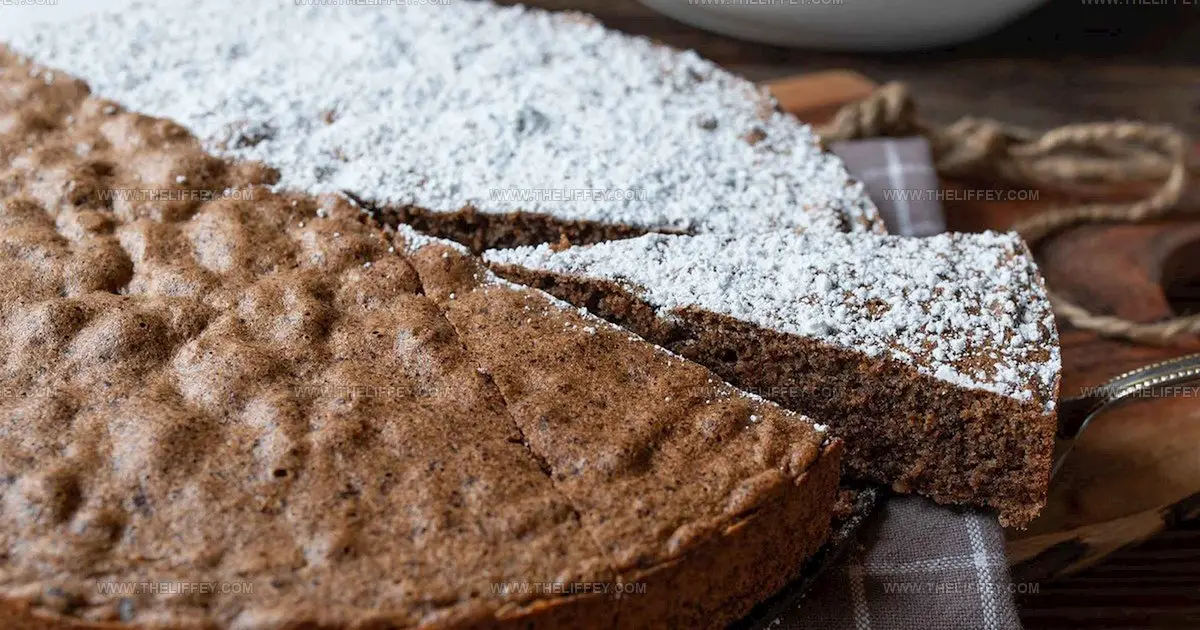

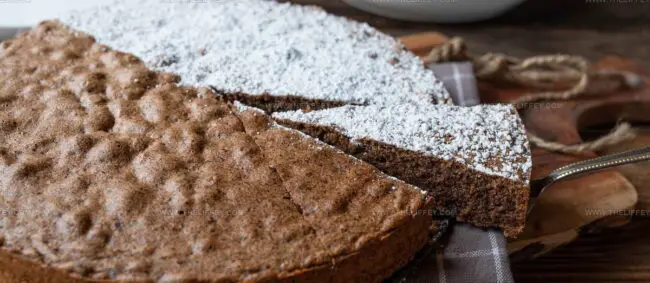
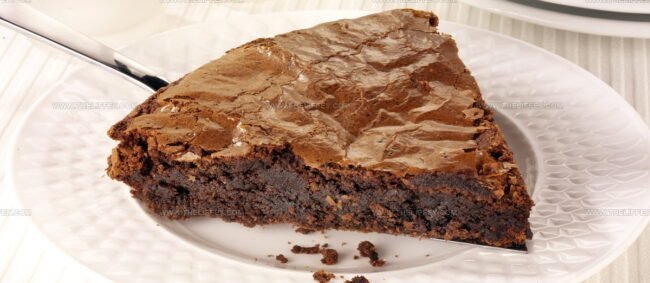
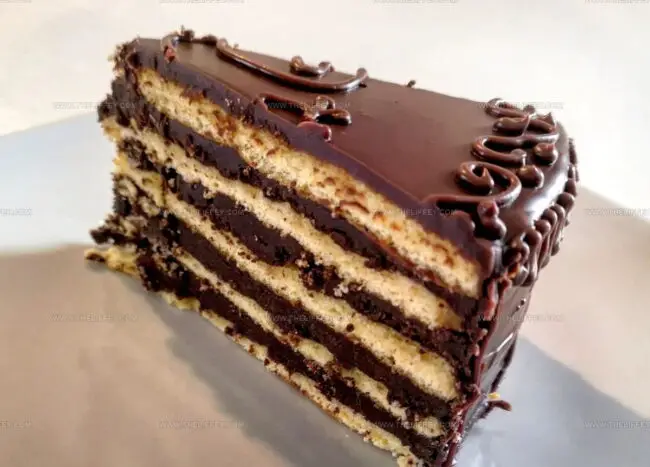
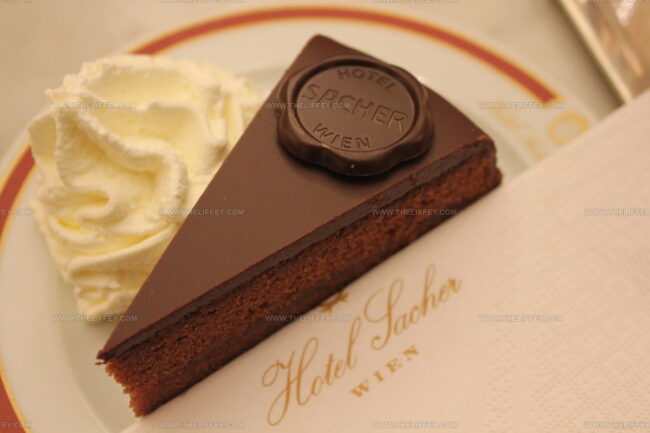
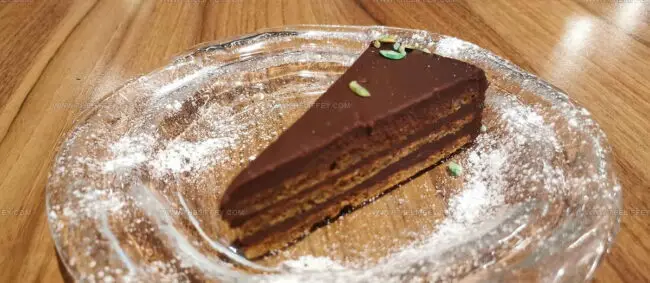

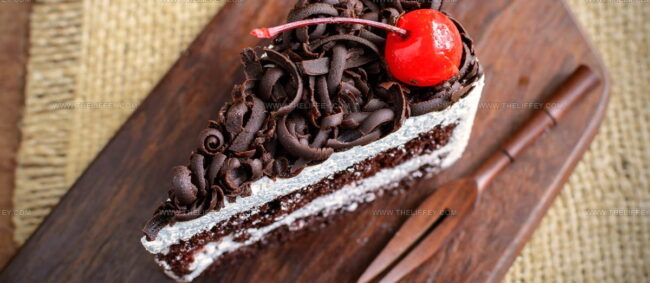
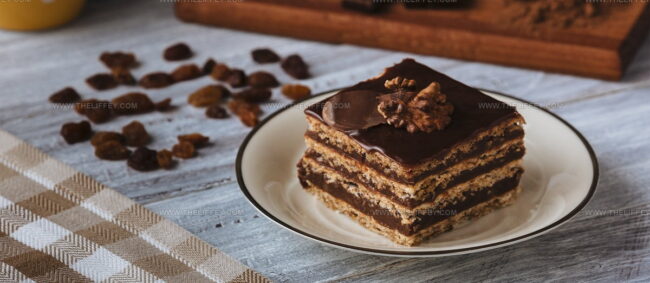
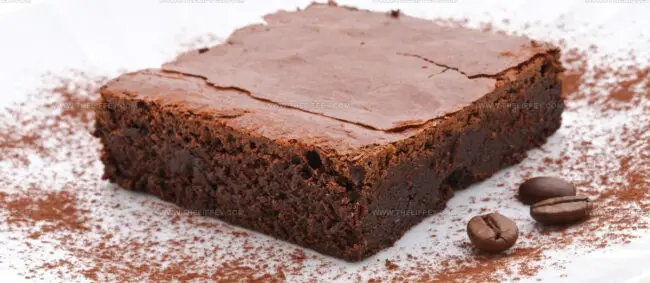
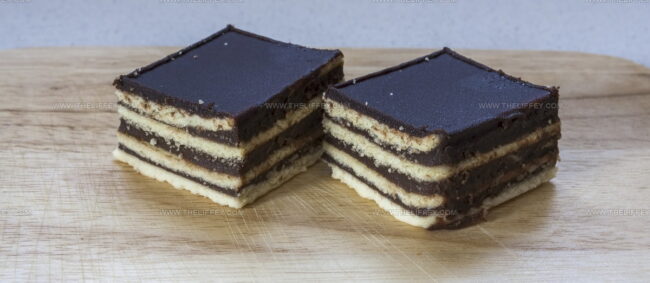

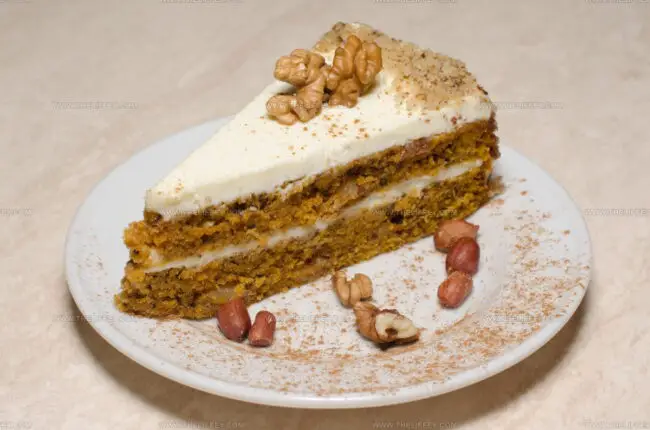

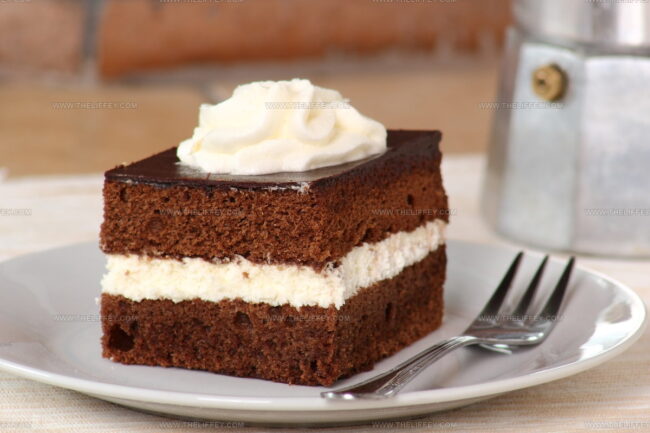
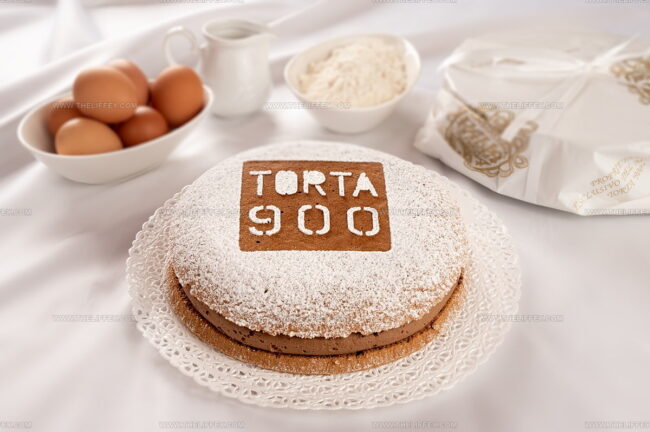
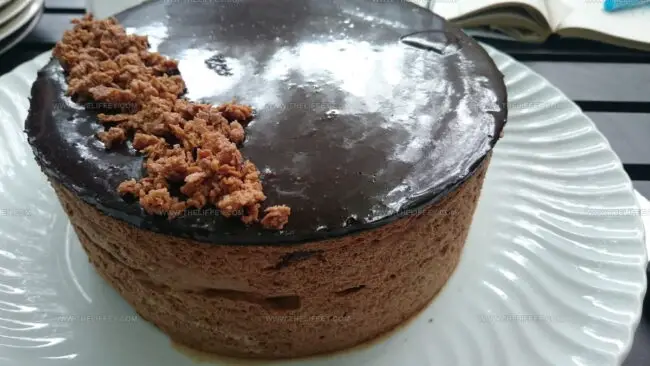
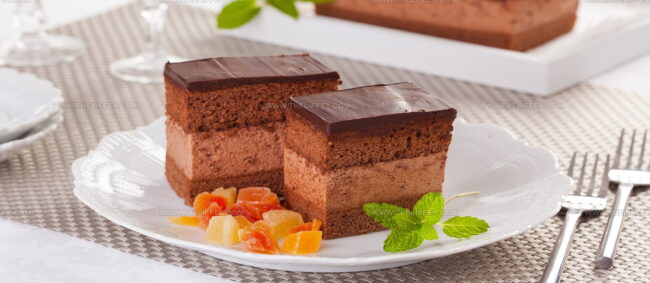
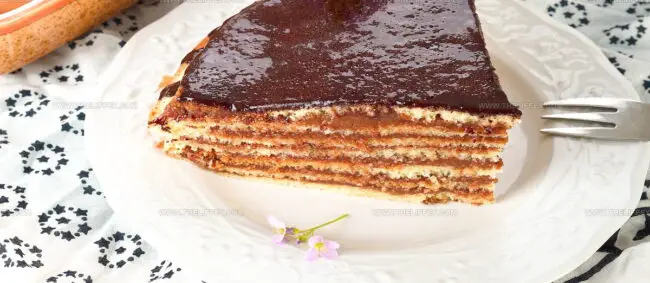

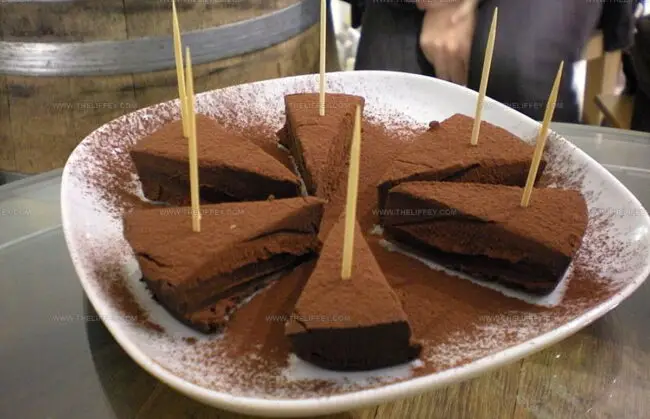
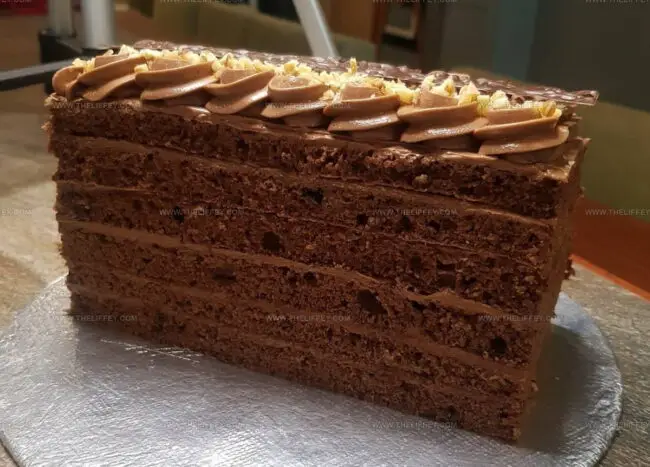
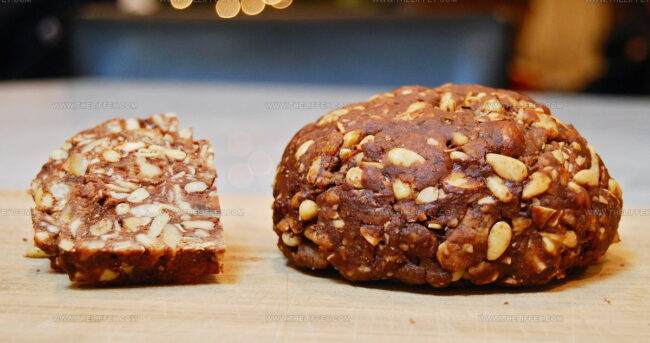
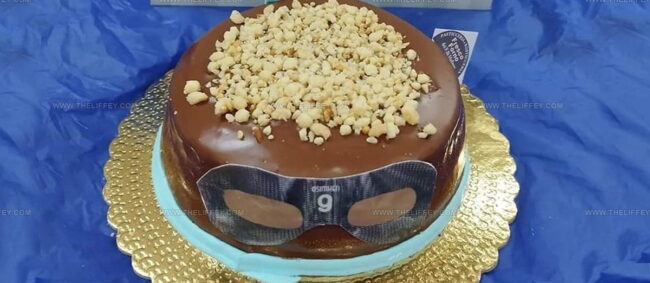
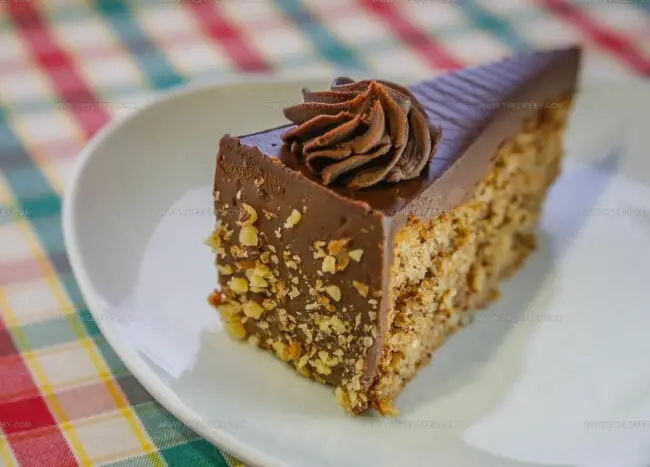

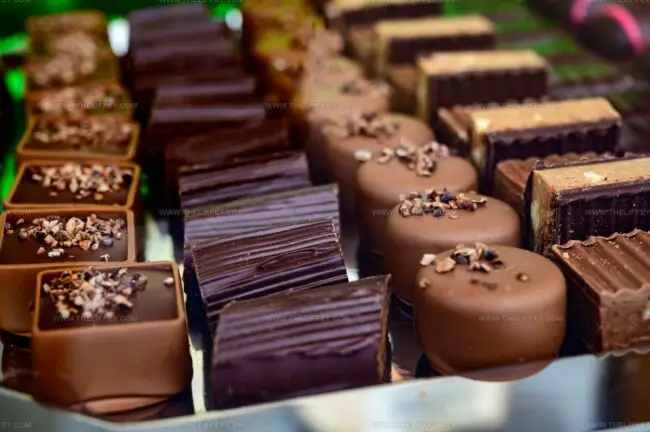
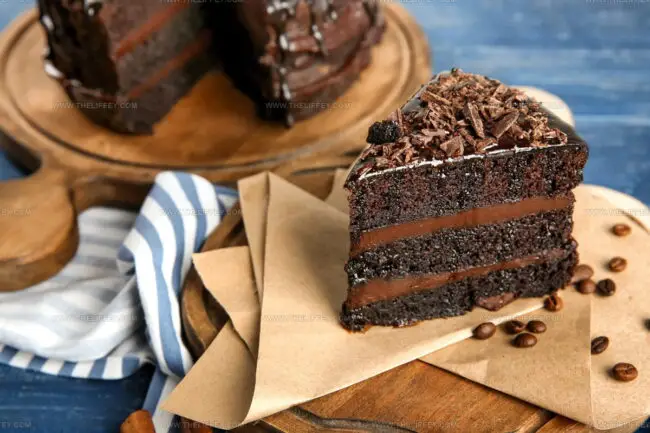
Amanda Bennett
Recipe Curator & Culinary Educator
Expertise
Baking and Pastry Arts, Recipe Testing and Development, Culinary Instruction, Food Styling and Photography
Education
Asheville-Buncombe Technical Community College, Asheville, NC
Diploma in Culinary Arts
Emphasized practical cooking skills, nutrition, and kitchen management.
Cambridge School of Culinary Arts, Cambridge, MA
Certificate in Professional Pastry Arts
Specialized in baking techniques, dessert presentation, and flavor profiling
Amanda’s roots run deep in the Southern hills, where every meal started fresh from the garden and every dessert came with a story. She trained at Asheville-Buncombe Technical Community College and sharpened her pastry skills at the Cambridge School of Culinary Arts, blending classic technique with everyday charm.
At The Liffey, Amanda’s passion is making baking and home cooking feel natural and joyful. She’s all about single recipes that are simple enough for a busy afternoon, but special enough to make someone’s day a little sweeter.